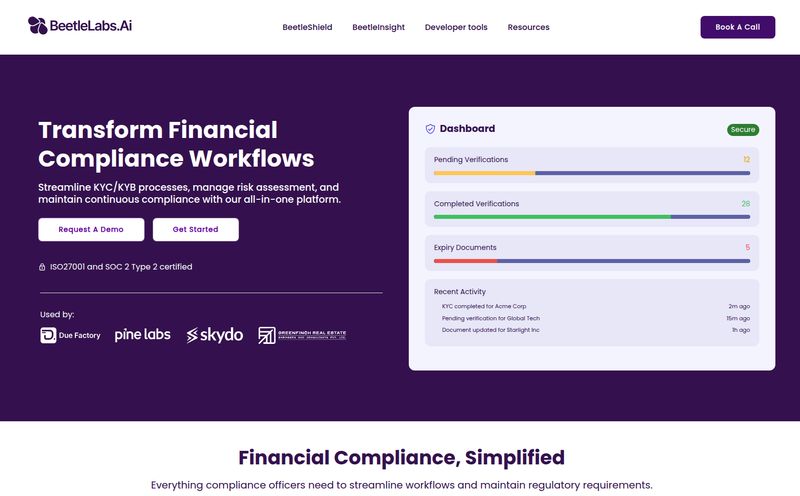If you've been anywhere near the tech, business, or even gaming world in the last few years, you've heard the name NVIDIA. It’s everywhere. It feels like one minute they were the company you trusted for the graphics card in your gaming rig, and the next, they're the foundational pillar holding up the entire AI revolution. The stock price is a rollercoaster, Jensen Huang is on every stage in his signature leather jacket... it’s a lot.
But what do they actually do? As someone who's spent years chasing traffic and trends, I've watched NVIDIA's search relevance explode beyond just 'best graphics cards for gaming'. They've become something much, much bigger. So, let’s cut through the noise and talk about what NVIDIA is in 2024, from one professional to another.
More Than Just a Gamer's Best Friend
For the longest time, the conversation was simple: NVIDIA GeForce for gaming, Quadro for professional design work. That was their world. But that's a postcard-sized view of a sprawling national park. The real story, the one that’s causing all this commotion, started when they realized their little graphics processing units (GPUs) had a secret talent.
The GPU: The Engine That Changed Everything
Originally, a GPU's job was pretty straightforward: render polygons and textures so you could see pretty explosions in your video games. They were designed for parallel processing—doing thousands of simple calculations all at once. Someone, somewhere, had a lightbulb moment and realized this architecture was perfect for the massive, parallel calculations needed for scientific computing and, you guessed it, training artificial intelligence models. This gave birth to technologies like CUDA (Compute Unified Device Architecture), NVIDIA's parallel computing platform. Suddenly, their gaming hardware became the go-to tool for researchers and data scientists. They weren't just selling shovels in a gold rush; they were selling the geological survey maps, the high-tech drills, and the refinery.
Powering the AI Revolution We're Living In
And that brings us to today. Every major AI breakthrough you read about, from large language models like GPT to incredible AI image generators, was almost certainly trained on racks and racks of NVIDIA GPUs in a data center. They are the undisputed heavyweight champions of AI hardware.
It's not just about the raw silicon, either. They’ve built an entire ecosystem around it. They offer complete solutions for industries I wouldn't have even thought of a decade ago—we're talking autonomous vehicles, robotics and edge AI, high-performance computing for weather simulation, and even creating 'digital twins' of entire factories for simulation purposes. It's wild stuff. Looking at their recent presence at events like VivaTech in Paris, you can see their focus has shifted from just components to full-stack, world-changing platforms.

Visit NVIDIA
From Data Centers to Self-Driving Cars
Their reach is staggering. They're in the cloud, with every major provider offering NVIDIA-powered instances. They're on the ground, with their NVIDIA DRIVE platform acting as the central nervous system for a growing number of autonomous vehicles. They are, without exaggeration, building the infrastructure for the next generation of computing.
So, What About for the Rest of Us? Enter GeForce NOW
Okay, that’s all fascinating, but what if you're not building a sentient AI in your garage? What if you just want to play the latest Cyberpunk 2077 expansion with all the glorious ray tracing turned on, but your laptop sounds like a jet engine just opening a web browser? For us mere mortals, there's GeForce NOW.
This is their cloud gaming platform, and honestly, it’s pretty slick. Instead of needing a monster PC, you stream games from NVIDIA's own supercomputers. You get all the performance—high resolutions, real-time ray tracing, the works—on almost any device. A Mac, a cheap laptop, even your phone. You still have to own the games on platforms like Steam or Epic Games, but it means no more massive downloads or worrying if your hardware is up to snuff. It’s a genuinely impressive consumer-facing application of their data center muscle.
The NVIDIA Ecosystem: What's the Real Deal?
Alright, let's get into the nitty-gritty. I've painted a rosy picture, but as with any tech giant, it's a two-sided coin. In my experience, working with or building on a dominant platform always comes with trade-offs.
The Upside: Raw Power and a Robust Playground
The performance is undeniable. When you need the best, you often end up at NVIDIA's door. Their hardware is top-of-the-line. But more importantly, their software ecosystem, especially CUDA, is so entrenched in the scientific and AI communities that it’s the de-facto standard. This creates a powerful network effect; more developers use it because it's the standard, which in turn solidifies its position as the standard. It's a powerful moat that competitors like AMD are still struggling to cross in the AI space.
The Downside: The Price of Power and a Walled Garden
That power comes at a cost. And I mean that literally. NVIDIA products are not cheap. Whether it's a high-end consumer GPU or a multi-million dollar data center contract, you're paying a premium. Furthermore, when you build on their proprietary technology like CUDA, you're tying yourself to their ecosystem. This vendor lock-in is a real concern for many businesses. It can make implementation complex and create compatibility headaches if you’re trying to mix and match with other hardware. It's a classic walled-garden scenario—the garden is beautiful, but the walls are high.
Let's Talk Pricing
This is the million-dollar question, sometimes literally. For their enterprise, AI, and data center solutions, there's no price tag on the website. It’s a “call us” situation, with pricing based on massive, bespoke contracts. As for their professional Quadro cards, they range from several hundred to many thousands of dollars.
On the consumer side, things are clearer. For GeForce NOW, they have a tiered approach which is much more accessible:
- Free Tier: You can actually try it for free. You get standard access and are limited to one-hour gaming sessions, and you might have to wait in a queue.
- Priority Tier: This is a paid monthly/yearly subscription that gives you a premium rig, priority access (no more queues), longer session lengths, and RTX ON capabilities.
- Ultimate Tier: The top dog. You get exclusive access to their best rigs (think RTX 4080 performance), the highest resolutions and frame rates, and the lowest latency. It’s for the enthusiast who wants the absolute best cloud gaming experience.
Frequently Asked Questions
- Is NVIDIA just for gaming?
- Not anymore! While they started in and still dominate high-end PC gaming with their GeForce line, their biggest business is now providing the hardware and software for AI, data centers, professional design, and autonomous systems.
- What is CUDA and why is it important?
- CUDA is NVIDIA's software platform that allows developers to use the massive parallel processing power of a GPU for general-purpose tasks, not just graphics. It's the key that unlocked GPUs for the AI and scientific computing worlds, creating the foundation for their current market leadership.
- Can I try NVIDIA's cloud gaming for free?
- Yes! NVIDIA GeForce NOW offers a free membership tier. It has some limitations, like session length and potential wait times, but it’s a great way to test the service and see if it works for you and your internet connection.
- Why are NVIDIA GPUs so expensive?
- It's a mix of things: high R&D costs to stay on the cutting edge, their dominant market position in the AI and high-end gaming space which allows them to set premium prices, and complex supply chains. You're paying for both the performance and the mature software ecosystem that comes with it.
- What industries use NVIDIA technology?
- The list is huge and growing. Key industries include automotive (for self-driving tech), healthcare (for medical imaging and drug discovery), media & entertainment (for CGI and rendering), financial services (for fraud detection and algorithmic trading), and basically any field that relies on heavy data analysis and AI.
Final Thoughts
So, is NVIDIA worth all the hype? From a technology and market impact perspective, absolutely. They've successfully executed one of the most significant pivots in tech history, moving from a niche hardware maker to the essential engine of a new technological era. They are, for better or worse, a foundational part of our digital world now.
The cost and the proprietary nature of their ecosystem are valid criticisms, for sure. But for now, they offer a level of performance and a developer environment that is, in many critical areas, simply unmatched. Watching them is no longer just about seeing the next great graphics card; it's about getting a front-row seat to the future being built, one GPU at a time.



